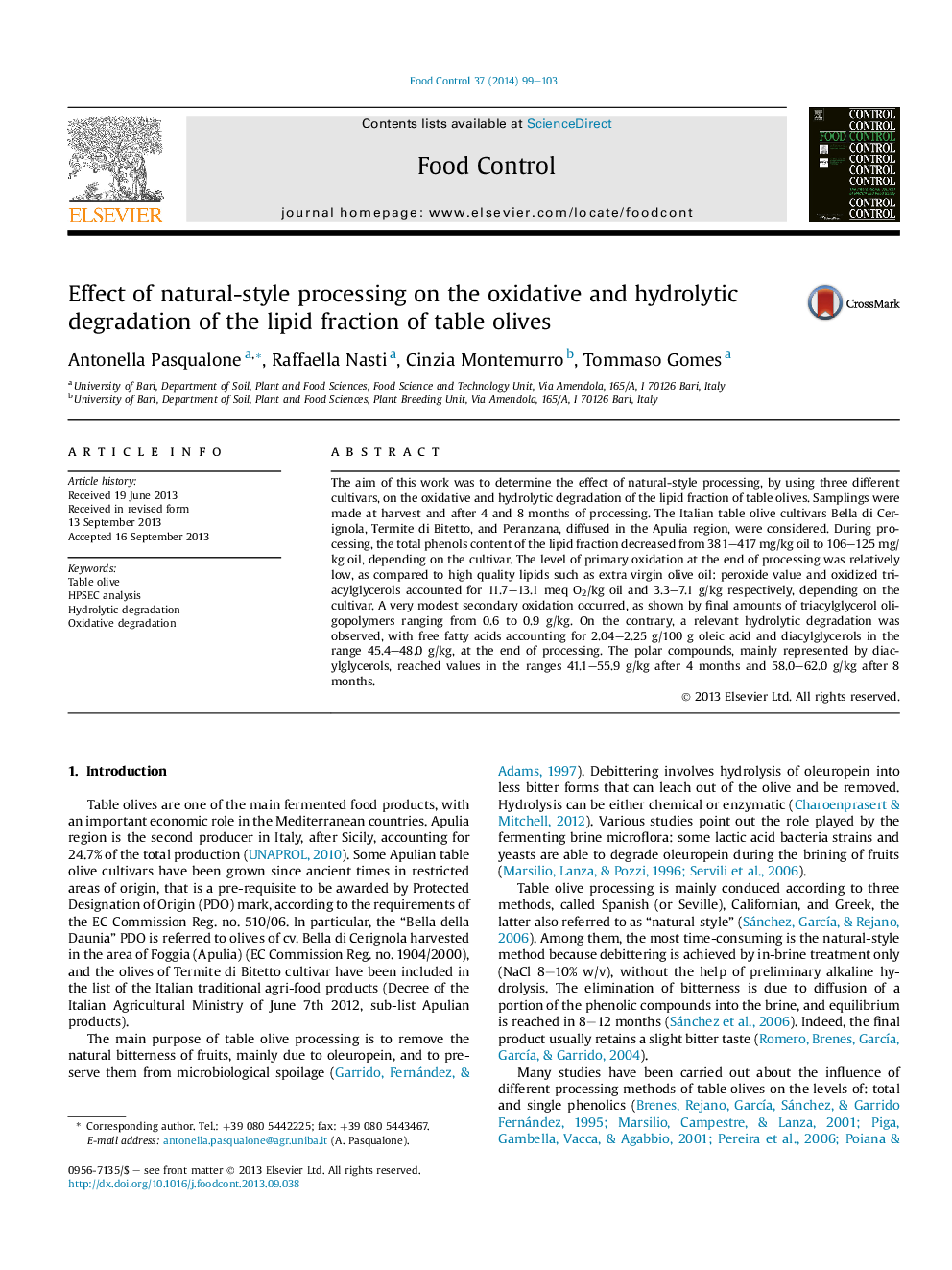| کد مقاله | کد نشریه | سال انتشار | مقاله انگلیسی | نسخه تمام متن |
|---|---|---|---|---|
| 6392182 | 1628425 | 2014 | 5 صفحه PDF | دانلود رایگان |
- The effect of natural-style processing on the lipids of table olives was studied.
- The indices of oxidative and hydrolytic degradation increased during processing.
- The level of primary oxidation at the end of processing was relatively low.
- Very low amounts of triacylglycerol oligopolymers were detected.
- A relevant hydrolytic degradation was observed after 8 months of processing.
The aim of this work was to determine the effect of natural-style processing, by using three different cultivars, on the oxidative and hydrolytic degradation of the lipid fraction of table olives. Samplings were made at harvest and after 4 and 8 months of processing. The Italian table olive cultivars Bella di Cerignola, Termite di Bitetto, and Peranzana, diffused in the Apulia region, were considered. During processing, the total phenols content of the lipid fraction decreased from 381-417 mg/kg oil to 106-125 mg/kg oil, depending on the cultivar. The level of primary oxidation at the end of processing was relatively low, as compared to high quality lipids such as extra virgin olive oil: peroxide value and oxidized triacylglycerols accounted for 11.7-13.1 meq O2/kg oil and 3.3-7.1 g/kg respectively, depending on the cultivar. A very modest secondary oxidation occurred, as shown by final amounts of triacylglycerol oligopolymers ranging from 0.6 to 0.9 g/kg. On the contrary, a relevant hydrolytic degradation was observed, with free fatty acids accounting for 2.04-2.25 g/100 g oleic acid and diacylglycerols in the range 45.4-48.0 g/kg, at the end of processing. The polar compounds, mainly represented by diacylglycerols, reached values in the ranges 41.1-55.9 g/kg after 4 months and 58.0-62.0 g/kg after 8 months.
Journal: Food Control - Volume 37, March 2014, Pages 99-103
